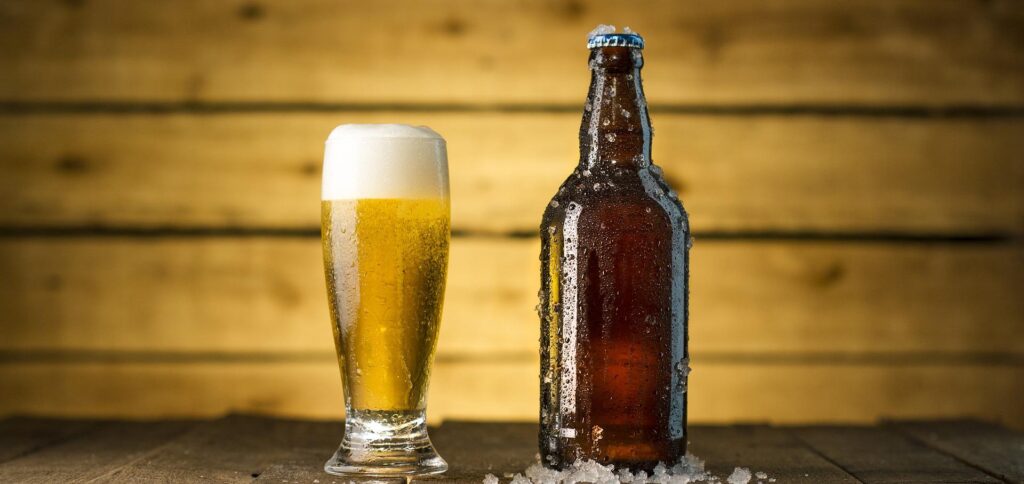At-home beer consumption in the second year of the pandemic

Many of us started the second year of the pandemic hoping that things would quickly improve and restrictions would ease. However, new virus variants, the anti-vax movement and the resulting long-lasting closures of catering establishments in spring soon tarnished the prediction that things would be more normal than the previous year. Owners were hit hard in 2021 as bars and restaurants were mainly empty, followed by hesitant visits.
FMCG: At first glance, it’s no wonder that sales for at-home consumption aren’t faltering in the second year of the pandemic, instead being able to grow once again: after an outlier year in 2020 with +12.6%, sales growth achieved a further +1% in 2021. However, this growth is the result of the first quart alone, which is still unaffected by COVID-19 in 2020 and is therefore running against “normal” figures in 2021 – which are unaffected by the coronavirus. There are also significant differences between the drivers of sales: While the large increase in the year before last was still characterized by higher demand, in 2021 higher prices are the sole factor that can balance the recent significant decline in volume.
The reason for the higher level of prices actually paid has more to do with the trading-up effect and less with actual increases in the product price: Consumers are turning to other, higher-priced products that they have not bought before. The trend towards “premiumization” is clear across almost all product groups. In most beverage categories – alcoholic and non-alcoholic – there is an increase in value with a simultaneous decrease in volume. This suggests that, despite reduced consumption, consumers are generally willing to pay higher prices if products deliver the desired (added) value, especially when it comes to high-proof drinks.

Beer/mixed beer drinks: When looking at the development of in-home consumption of beer and mixed beer drinks, the values are rather disappointing. With declining sales and volumes, it is primarily the shrinking number of buyers and the reduced volume per household that are responsible for the drop in sales. However, the prices paid per liter are also rising in the beer market, meaning it’s also possible to identify the general willingness to spend more money on special, attractive beer products.
There is as much variety between individual beverage categories, as there is between types of beer. The black sheep pilsner has it especially tough here and is confronted with two market developments: The main variety is losing more buyers year on year – particularly among younger generations – leading to great losses for the market. Many people are also migrating toward the trendy light beer variety, in turn reducing their consumption of pilsners. There’s currently no end in sight for the growth of these somewhat milder beers, which is able to appeal to new buyers across all age groups. Consumers are also more willing to treat themselves and spend a few euros more for a light beer than for a crate of pilsner.
The trends from the past year also give an idea of similar progress for the further development of varieties in the beer market. Nevertheless, 2022 will certainly remain exciting in many respects: For one thing, many are eagerly awaiting the return of public life with trips to restaurants, bars and cinemas, which will reduce at-home consumption. Furthermore, consumers may be hit more strongly while inflation continues to rise, which could lead to a change in purchasing behavior. With this comes uncertainty about the future situation, which is derived from the current geopolitical events.
Would you like to find out about current trends on the beverage market and exchange professional information? Then we invite you to take part in the next drinktec, which will be held in Munich from September 12 to 16, 2022.
This article is powered by Verlag W. Sachon.
